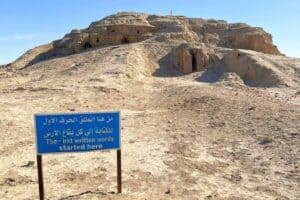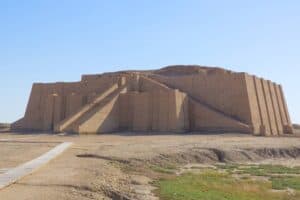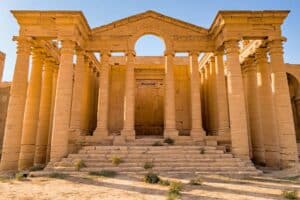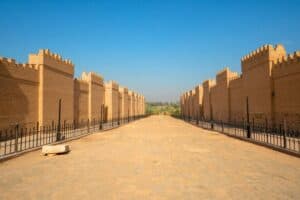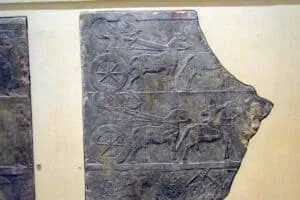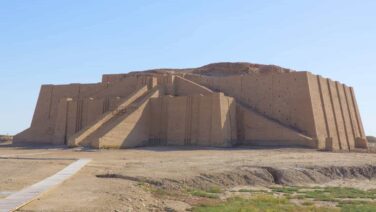The ancient cities of Mesopotamia are among the most significant and influential in human history. These places should be on your list of priorities while you visit Iraq. Located in the fertile crescent between the Tigris and Euphrates rivers, these Iraq ancient cities were the cradles of civilization, contributing immensely to the development of urbanization, writing, architecture, and culture. This page explores six prominent cities: Babylon, Ctesiphon, Eridu, Hatra, Samarra, and Nineveh. Each of these cities offers a unique glimpse into the past, showcasing the grandeur, innovation, and complexity of ancient Mesopotamian societies.
| City | Year of Creation | Important Ruler | Year of Decline | Population Max | Approx. Number of Army | Resources for Trade |
|---|---|---|---|---|---|---|
| Babylon | circa 2300 BC | Nebuchadnezzar II | 539 BC | 200,000 | 20,000 | Grain, dates, textiles, pottery |
| Ctesiphon | circa 120 BC | Shapur I | 637 AD | 100,000 | 15,000 | Silk, spices, precious stones, horses |
| Eridu | circa 5400 BC | Ur-Nammu | 2000 BC | 10,000 | 1,000 | Fish, barley, textiles, pottery |
| Hatra | 3rd century BC | Sanatruq II | 241 AD | 20,000 | 5,000 | Grain, livestock, textiles, pottery |
| Samarra | 836 AD | Al-Mu’tasim | 892 AD | 150,000 | 25,000 | Grain, textiles, pottery, metals |
| Nineveh | circa 6000 BC | Sennacherib | 612 BC | 120,000 | 30,000 | Grain, livestock, textiles, metals |
| Ur | circa 3800 BC | Ur-Nammu | 500 BC | 80,000 | 4,000 | Grain, fish, dates, textiles, pottery |
| Uruk | circa 4500 BC | Gilgamesh | 1st century AD | 50,000 | 5,000 | Grain, livestock, textiles, pottery |
Ancient cities of Iraq
- Ancient Cities of Mesopotamia

- Uruk Ancient City

- Ur Ancient City

- Samarra Ancient City

- Hatra Ancient City

- Eridu Ancient City

- Babylon Ancient City

- Ctesiphon Ancient City

- Nineveh Ancient City

Iraq Ancient cities
Babylon
Babylon, situated on the Euphrates River, was one of the most renowned ancient cities of Iraq, in the ancient world. It was the capital of the Babylonian Empire and a center of culture, science, and art. Babylon is one of the most important UNESCO World Heritage Sites in Iraq.
Highlights
- Hanging Gardens: Considered one of the Seven Wonders of the Ancient World, the Hanging Gardens were said to be an extraordinary feat of engineering, featuring lush terraces and waterfalls.
- Ishtar Gate: An impressive entrance adorned with glazed brick reliefs of dragons and bulls, symbolizing the city’s power and grandeur.
- Tower of Babel: The legendary ziggurat, often associated with the biblical Tower of Babel, symbolized the city’s architectural and religious ambitions.
Historical Significance
Founded around 2300 BC, Babylon reached its zenith under King Nebuchadnezzar II, who ruled from 605 to 562 BC. The city was famed for its monumental architecture, including the Great Ziggurat and the Hanging Gardens. It was also a hub of learning and science, contributing significantly to mathematics, astronomy, and literature.
Ctesiphon
Ctesiphon was the capital of the Parthian and later the Sassanian Empires, located on the banks of the Tigris River. It was known for its grand architecture and strategic importance.
Highlights
- Taq Kasra: The largest single-span brick arch in the world, showcasing Sassanian architectural innovation.
- Ctesiphon Palace: The royal residence of Sassanian kings, known for its opulent design.
- Great Arch: A part of the palace complex, this structure symbolizes the grandeur of Persian engineering.
Historical Significance
Founded around 120 BC, Ctesiphon became a major center of power under the Parthians and Sassanians. It was a hub of cultural exchange, blending Greco-Roman and Persian influences. The city’s strategic location made it a focal point for trade and military campaigns.
Eridu
Eridu is considered one of the oldest cities in the world, located in southern Mesopotamia near the Euphrates River. It was a significant religious and cultural center in ancient Sumer.
Highlights
- Temple of Enki: Dedicated to the god of water and wisdom, one of the earliest and most important religious sites.
- Ziggurat of Eridu: An early example of Mesopotamian stepped pyramids, symbolizing the city’s religious significance.
- Royal Tombs: Richly decorated tombs providing insights into ancient burial practices.
Historical Significance
Founded around 5400 BC, Eridu was a key religious center, home to the god Enki. It played a crucial role in the development of Sumerian culture and urbanization. Despite its decline around 2000 BC, Eridu remains a cornerstone in the study of early Mesopotamian history.
Hatra
Hatra, located in northern Iraq, was a significant city of the Parthian Empire and later the Arab Kingdom of Hatra. It was known for its impressive fortifications and architectural blend of Greco-Roman and Eastern styles.
Highlights
- Great Temple: A major religious site with a unique architectural blend.
- Fortifications: Massive walls and defensive towers highlighting the city’s strategic importance.
- Nergal Gate: Adorned with impressive sculptures and inscriptions.
Historical Significance
Founded in the 3rd century BC, Hatra reached its peak under the Parthians and the Arab Kingdom. It was renowned for its resilience, successfully repelling Roman sieges. The city’s decline began in the 3rd century AD after being captured by the Sassanians.
Samarra
Samarra, located on the eastern bank of the Tigris River, was a prominent city during the Abbasid Caliphate. It is renowned for its architectural and cultural achievements.
Highlights
- Great Mosque: Once the largest mosque in the world.
- Spiral Minaret: An iconic structure with a unique helical design.
- Palace of the Caliphs: A grand palace complex showcasing Abbasid architectural brilliance.
Historical Significance
Founded in 836 AD by Caliph Al-Mu’tasim, Samarra served as the Abbasid capital for over 50 years. It was a center of Islamic culture and architecture, known for its grand mosque and palaces. The city’s decline began after the Abbasid capital moved back to Baghdad in 892 AD.
Nineveh
Nineveh, the capital of the Assyrian Empire, was one of the largest and most influential cities of the ancient world. Located near modern-day Mosul, it was known for its grand architecture and extensive library.
Highlights
- Palace of Sennacherib: The largest and most elaborate palace in Assyrian history.
- Library of Ashurbanipal: One of the earliest known libraries, housing thousands of cuneiform tablets.
- City Walls: Massive fortifications that protected the city.
Historical Significance
Founded around 6000 BC, Nineveh reached its peak under kings Sennacherib and Ashurbanipal in the 7th century BC. The city was a hub of culture, science, and military power. Its decline began after its capture by a coalition of Babylonians, Medes, and Scythians in 612 BC.
Ur
Ur, located in southern Mesopotamia near the Euphrates River, was a major urban center and a powerful city-state during the early Bronze Age. It is known for its impressive ziggurat and rich history.
Highlights
- Great Ziggurat of Ur: A well-preserved ziggurat dedicated to the moon god Nanna.
- Royal Tombs of Ur: Richly decorated tombs offering insights into ancient burial practices.
- Temple of Nanna: A central place of worship in Ur.
Historical Significance
Founded around 3800 BC, Ur reached its peak under the Third Dynasty of Ur (circa 2100-2000 BC). The city was a center of religious and cultural activity, with significant contributions to architecture and art. It gradually declined under the Achaemenid Empire around 500 BC.
Uruk
Uruk, one of the first true cities in human history, was located in southern Mesopotamia. It played a crucial role in the development of urban civilization and is known for its impressive architecture and innovative writing system.
Highlights
- Eanna District: A major religious and administrative center dedicated to the goddess Inanna.
- Anu Ziggurat and White Temple: Monumental structures dedicated to the sky god Anu.
- City Walls: Massive fortifications attributed to the legendary king Gilgamesh.
Historical Significance
Founded around 4500 BC, Uruk reached its zenith during the Early Dynastic Period (circa 2900 BC). The city is famed for its early development of cuneiform writing and its monumental architecture. Uruk played a key role in the cultural and political landscape of ancient Mesopotamia until its decline around the 1st century AD.
Conclusion
The ancient cities of Mesopotamia, from Babylon and Ctesiphon to Eridu, Hatra, Samarra, Nineveh, Ur, and Uruk, offer a fascinating glimpse into the origins of urban civilization. Each city, with its unique contributions to architecture, culture, and politics, showcases the ingenuity and achievements of ancient societies. Exploring these cities provides invaluable insights into the early development of human civilization and the enduring legacy of Mesopotamian deep inside the Iraq culture. Whether you are a history enthusiast or a curious traveler, these ancient cities offer a captivating journey into the past.


